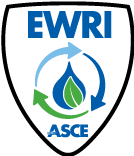Written by: Deva K. Borah, Ph.D., P.E., F. ASCE, F. EWRI, Chair of the EWRI Watershed Council & TMDL Analysis and Modeling Task Committee
The Total Maximum Daily Load or TMDL refers scientifically to the maximum amount of a pollutant a waterbody can have without harm, whereas in regulatory context, it is a document or plan of action to restore impaired water bodies. Developing such a document (TMDL) is challenging as there exists no clear guidance in selecting from numerous models and analytical approaches used, among many others. The TMDL Analysis and Modeling Task Committee was formed in 2011 to address these challenges and to fill the gap of a guidance document on selecting and applying analytic and modeling tools in TMDL development and implementation planning.
The Task Committee first reviewed the current practices of analysis and modeling in TMDLs and documented its findings in an ASCE EWRI book, “Total Maximum Daily Load Analysis and Modeling: Assessment of the Practice” in 2017. Secondly, members of the committee published a Special Collection on Total Maximum Daily Load Analysis and Modeling: Assessment and Advancement: Journal of Hydrologic Engineering during the period 2018-2021. These articles provide state-of-the-art and state-of-the-practice overviews of 15 relevant topics on TMDL analysis and modeling, of which five articles were published by authors external to the Task Committee.
Based on the above publications and further research, the Task Committee published the ASCE Manual of Practice 150, “Total Maximum Daily Load Development and Implementation: Models, Methods, and Resources,” in 2022. It reviews and evaluates current practices and potential future approaches to TMDL analysis and modeling. The primary goal is to support more comprehensive and effective TMDL development and implementation that will prove to be beneficial to the public through eliminating current and future impairments to waterbodies and improving water quality for designated uses with more confidence and certainty.
The Task Committee continues to work towards advancing the science and practice of TMDL by addressing climate resilience, socio-environmental systems, and holistic concepts as applicable to TMDLs and watershed management and documenting its work in a Special Collection on Total Maximum Daily Load Analysis and Modeling Advances: Connecting Climate Resilience, Socio-Environmental Systems, and Holistic Watershed Management: Journal of Environmental Engineering. The collection is open to all other authors outside of the Task Committee as outlined in the Call for Papers: Total Maximum Daily Load Analysis and Modeling Advances: Connecting Climate Resilience, SocioEnvironmental Systems, and Holistic Watershed Management with a manuscript submission deadline of December 31, 2025. The purpose of this Special Collection is to showcase recent advances in analysis and modeling for TMDL development and implementation. So far, it includes the following published articles:
- Advancing Surface Water Quality Modeling for TMDL Application: Enhancing Sediment-Associated Processes, Atmospheric Reaeration, and Bed Layer Interactions
- Rethinking TMDLs: Perspective Based on Community Survey
- Large-Scale Geospatial Analysis of Suitable Siting for Green Stormwater Infrastructure: An Open-Source Tool for Promoting Sustainability and Environmental Justice in Urban Communities
- Advances in Total Maximum Daily Load Implementation Planning by Modeling Best Management Practices and Green Infrastructures
- Comprehensive Insights into Harmful Algal Blooms: A Review of Chemical, Physical, Biological, and Climatological Influencers with Predictive Modeling Approaches
- Removal of Contaminants in Stormwater via Subsurface-Flow Wetlands: A Review with Focus on Nutrients, Heavy Metals, and PFAS
- Effect of Increasing Discharge on Municipal Storm Sewer Systems: Exploring the Connection to Total Maximum Daily Load
- Using Analytical Hierarchy Process for Excess-Chlorine Risk Assessments in a Water Distribution Network: A Case Study
Potential articles under review or preparation are:
- Are Mitigation Measures for Nutrient Pollution Working – A Data-Driven Analysis of Selected United States Waters
- Advances and Research Gaps for PFAS Modeling in Watersheds and Receiving Waters
- Improving the Integration of Diversity, Equity, Inclusion, and Justice Goals in Total Maximum Daily Load Models and Projects
- Overcoming Data Scarcity in Total Maximum Daily Load Modeling
- Machine Learning: The Future of TMDL Modeling
- Critical Evaluation of Total Maximum Daily Load Development Through Completed Reports
- Next Generation of Water Quality Management Models
- An Enhanced Approach to Modeling for Total Maximum Daily Load Development and Implementation
- Evaluation of Different Approaches to Watershed Management


